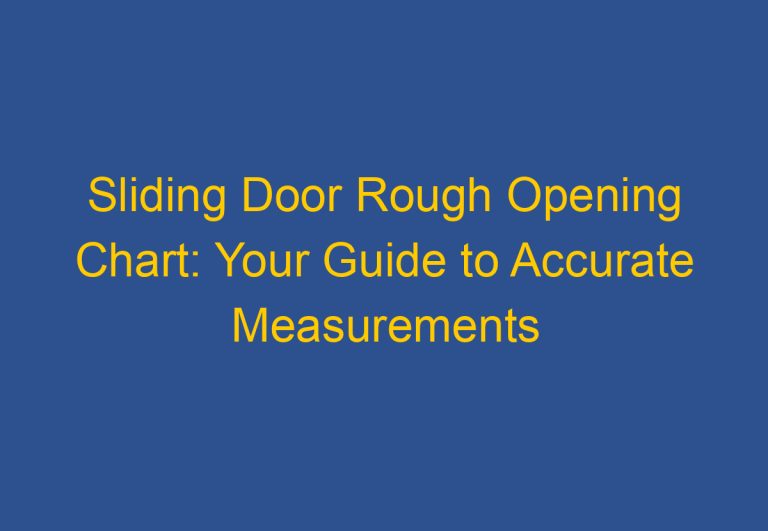Jeep Wrangler Towing Capacity: Understanding Its Limits and Capabilities
The towing capacity of the Jeep Wrangler often raises questions among off-road enthusiasts and everyday drivers alike. Known for its ruggedness and ability to tackle tough terrain, the Wrangler also boasts impressive capabilities for hauling. Whether it’s a travel trailer, ATV, or boat, the Wrangler is designed to support various towing needs, making it a versatile choice for adventurers.
Exploring what a Jeep Wrangler can reasonably tow opens up a world of possibilities for outdoor activities. Understanding the limits and options available will help owners maximize their adventures. With this knowledge, they can make informed decisions about which toys to bring along on their trips.
What Is the Tow Capacity of a Jeep Wrangler?
The towing capability of a Jeep Wrangler varies by model year, typically ranging from 2,000 to 3,500 pounds. For the latest 2024 models, some configurations can reach a remarkable maximum of 5,000 pounds, depending on the setup.
To understand the towing capacity better, it’s essential to note that two-door Jeep Wranglers generally handle lighter loads, usually around 2,000 pounds. In contrast, the four-door models can generally tow heavier weights, which is about 3,500 pounds.
Key factors influencing towing capacity include the vehicle’s axle ratio, engine type, and specific trim level. For accurate towing figures, Jeep owners should inspect the information located on the door jamb sticker inside the driver’s side door or consult with a local Jeep dealership. This ensures they can confirm the exact towing specifications for their particular year and model.
Knowing these details helps Jeep owners take full advantage of their vehicle’s capabilities while towing safely and effectively.
Jeep Wrangler Towing Capacity Chart by Year
The towing capacity of the Jeep Wrangler has changed over the years. This chart provides a quick look at what to expect for various models.
| Year | Wrangler Sport 2-Door | Rubicon/Unlimited 4-Door |
|---|---|---|
| 2024 | 2,000 pounds | Up to 5,000 pounds |
| 2015 – 2023 | 2,000 pounds | 3,500 pounds |
| 2004-2014 | 2,000 pounds | 3,500 pounds |
| 2003 Rubicon’s First Year | 2,000 pounds | 3,500 pounds |
What Can You Tow With a Jeep Wrangler?
What Can You Tow With A 4-Door Jeep Wrangler?
The four-door Jeep Wrangler has a maximum towing capacity of around 3,500 pounds for most models. Some newer 2024 versions may handle up to 5,000 pounds, but it’s best to stick with the previous limits for those unfamiliar with the latest features. Here’s a list of items a four-door Wrangler can realistically tow:
- Two Touring Motorcycles: Roughly 700 pounds each, plus a trailer weighing about 500 pounds.
- Teardrop Trailer: Weighing about 1,700 pounds when empty. This gets heavier when adding water and camping essentials.
- Pop-up Trailer: Around 2,300 pounds unloaded, but extra weight from water and gear can quickly add up.
- Utility Trailer: This can range from 1,000 to 2,700 pounds, depending on the cargo loaded.
- Small Fishing Boat: A fiberglass fishing boat may weigh close to 1,700 pounds and requires about 80-130 pounds for the motor and 600 pounds for the trailer.
- 20-Foot Aluminum Fishing Boat: This setup may total about 2,000 pounds for the boat, plus 80-130 pounds for the motor, and 600 pounds for the trailer.
- Two ATVs: Each ATV can weigh about 630 pounds, and when placed on a trailer that weighs 500 pounds, it stays manageable.
- Small Camper Trailer: Many lightweight campers weigh around 2,800 pounds empty, plus water and living needs.
- Jet Skis: About 700 pounds each, with a trailer weight of 300-500 pounds for both.
- Snowmobiles: Each snowmobile weighs around 500 pounds, plus an additional 300-500 pounds for the trailer.
- Tow Dolly: A dolly weighs around 600 pounds and can handle a small vehicle weighing about 2,500 pounds.
- Small Horse Trailer: These typically weigh around 2,900 pounds. Adding a horse can push the total to 1,500-2,200 pounds more.
When considering towing, adding weight from water, equipment, and personal items is vital. For example, water weighs about 8 pounds per gallon. So, a 20-30 gallon fresh water tank can contribute anywhere from 160 to 240 pounds.
Camping trips require additional gear like:
- Propane
- Clothing
- Bedding
- Food
- Lawn chairs
- Toiletries
- Dishes
All this extra weight can quickly bring a vehicle close to its towing capacity. It’s important to keep track of total loaded weight to ensure safe towing.
Using a certified scale is recommended to confirm that the total weight is within the Jeep Wrangler’s towing limits. This practice ensures that everything remains safe on the road.
To find the perfect towing option, consider lightweight campers designed for SUVs. Many users find that a smaller travel trailer pairs well with the Wrangler’s off-road capabilities, making it a great companion for camping adventures.
Things To Consider Before Towing an RV with a Jeep Wrangler
Understanding Death Wobble
Death wobble is a serious issue that can occur in Jeep Wranglers, especially in models from 2015 to 2018. This phenomenon consists of intense shaking that can be alarming for drivers. It often happens when the vehicle is traveling at speeds above 40 mph and hits a pothole or bumpy terrain.
Common Causes of Death Wobble:
- Front Track Bar: This part helps keep the axle aligned. If it’s worn out, it can lead to instability.
- Ball Joints: These allow smooth movement of the wheels. Worn ball joints can cause excessive play, leading to wobble.
- Steering Stabilizer: It dampens the steering response. A faulty stabilizer can make the steering more sensitive to bumps.
- Wheel Bearings and Steering Box: Worn components may affect how the vehicle handles, increasing the risk of wobble.
Regular maintenance is key to reducing the risk of death wobble. In case it does occur, it’s advisable to consult a professional who can diagnose and fix the issue.
Trailer Sway Control
When towing a trailer, it’s vital to be aware of trailer sway. This occurs when lateral forces acting on the trailer transfer back to the Jeep. This can lead to losing control of both the tow vehicle and the trailer.
Factors that Contribute to Trailer Sway:
- Light Towing Vehicle: Wranglers are generally lighter and have shorter wheelbases, which makes them more susceptible to sway.
- Tight Turns: Sharp turns can increase the likelihood of the trailer swaying as it changes direction suddenly.
- High Speeds: Driving too fast can make it hard to control heavy loads.
- Improper Weight Distribution: Ensuring the load is balanced on the trailer can help mitigate sway.
- Low Tire Pressure: Underinflated tires can lead to poor handling, increasing the risk of swaying.
- Crosswinds: Strong winds can push against the trailer, creating sway.
Recognizing the difference between normal movement and sway is critical. Regular motion occurs during general driving, especially on rough roads. In contrast, sway exhibits persistent side-to-side motion.
To handle sway effectively, drivers should:
- Reduce Speed: Slow down gradually without slamming brakes.
- Brake Gently: Light taps on the brakes help restore stability without causing an overturn.
For those new to towing, watching video demonstrations of sway can provide helpful insights. These visuals illustrate the relationship between a trailer’s load distribution and sway control techniques.
Understanding both death wobble and trailer sway control can enhance safety when towing a RV with a Jeep Wrangler. Regular maintenance and awareness of these issues will aid in making informed decisions on the road.
Equipment Needed For Jeep Towing
When towing with a Jeep Wrangler, it is important to have the right equipment to ensure a safe and efficient experience. Below are the key components needed for towing.
Towing Hitch Receiver
A towing hitch receiver is commonly used for trailer connections. This component bolts securely to the underside of the Jeep. It acts as a socket where a ball mount can be inserted. Different types of tow hitches are available, categorized into five classes based on their weight ratings and vehicle compatibility. It is essential to choose a hitch designed for the specific model of the Jeep to ensure safety and performance.
Ball Mount, Pin, And Clip
The ball mount is a crucial accessory that connects to the receiver hitch. It features a shank that fits into the hitch and a platform on top for the hitch ball. This part is vital for towing, as it secures the trailer to the vehicle. Ball mounts come in various styles, including:
- Fixed Ball Mounts: Made from a single piece of material with no adjustments.
- Adjustable Ball Mounts: Can be modified in height to suit different trailer loads.
For security, the ball mount typically has a hole for a hitch pin or clip to keep it firmly in place. Sometimes, a ball hitch—a ball mount with an integrated trailer ball—offers an easier installation with a pre-welded design.
Trailer Hitch Ball
Trailer hitch balls, also referred to as hitch balls, are available in standard sizes to ensure compatibility with trailer couplers. This component connects the trailer to the towing vehicle, allowing for smooth navigation on the road. Key features include:
- Ball Shape: Facilitates turning and smooth transitions on uneven terrain.
- Mounting Options: Some hitch balls use pins or clips for security, while others may be locked in with a nut and washer setup. Welded hitch balls are permanently attached for added security.
Selecting the correct size and capacity of the hitch ball is vital for safe towing.
Wiring Harness
A wiring harness is essential for connecting the Jeep’s electrical system to the trailer. This setup allows for proper functioning of the trailer lights, ensuring visibility during nighttime towing. Standard connectors, like the four-way flat plug, link the harness to the Jeep’s existing wiring. The primary functions of the wiring harness include:
- Power Supply: Ensures the trailer lights operate in sync with the Jeep’s taillights and brake lights.
- Safety: Proper lighting reduces the chances of accidents and increases visibility on the road.
A reliable wiring harness is critical for any towing setup.
Other Considerations
Aside from the basic equipment, there are additional factors to keep in mind when preparing a Jeep for towing. Vehicle enhancements such as a stronger cooling system and a heavy-duty alternator can improve towing performance. It may also be advisable to invest in a heavy-duty battery to support increased power demands. For those planning to buy a new Jeep, informing the dealer about towing intentions can help ensure proper equipment is installed.
Additionally, ensuring that a full-size spare tire is available can prevent unforeseen issues during towing, contributing to a smoother journey. Carrying a spare tire is a smart precaution when on the road with a trailer.
Finding Genuine Jeep Towing Packages
To find reliable Jeep towing packages, contact authorized Jeep dealers or retail centers. Sharing your Wrangler’s VIN with them allows the parts department to swiftly identify the appropriate components.
It’s essential to ensure the dealer upgrades both the battery and alternator. Some may only install the hitch and wiring harness, which isn’t sufficient for optimal performance. Upgraded electrical parts are crucial for effective towing.
Considerations for Jeep Wrangler Towing Capacity
The Jeep Wrangler has a towing capacity that varies by model. Typically, two-door versions can handle around 2,000 pounds. The four-door models, like the Jeep Wrangler Unlimited, usually tow 3,500 pounds, with some 2024 vehicles capable of towing up to 5,000 pounds. To achieve these numbers, both variants require a towing package, which includes upgrades to the engine and electrical systems. Owners should consult local dealerships for available setups or consider aftermarket options to enhance their towing experience.














